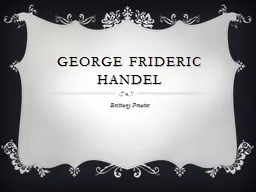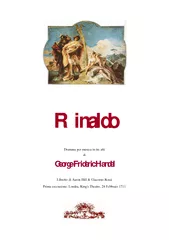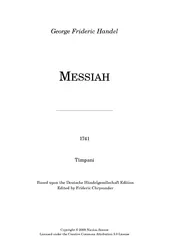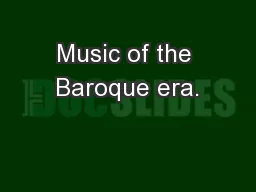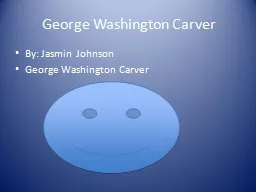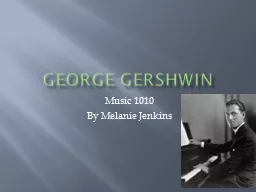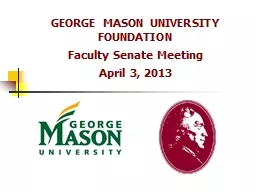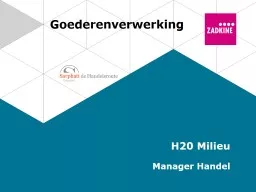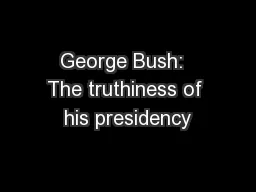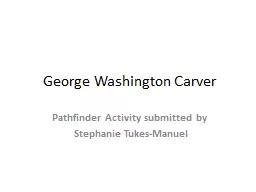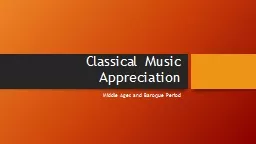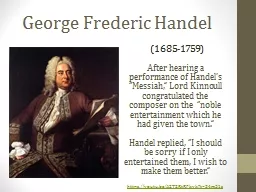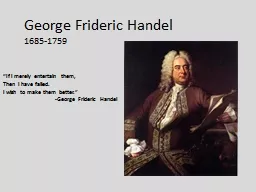PPT-George Frideric Handel
Author : conchita-marotz | Published Date : 2016-10-29
Brittany Preator Early life Born February 23 1685 in Halle Germany Parents Georg amp Dorothea Handel Handels Father insisted he studied law Handel obeyed but had
Presentation Embed Code
Download Presentation
Download Presentation The PPT/PDF document "George Frideric Handel" is the property of its rightful owner. Permission is granted to download and print the materials on this website for personal, non-commercial use only, and to display it on your personal computer provided you do not modify the materials and that you retain all copyright notices contained in the materials. By downloading content from our website, you accept the terms of this agreement.
George Frideric Handel: Transcript
Download Rules Of Document
"George Frideric Handel"The content belongs to its owner. You may download and print it for personal use, without modification, and keep all copyright notices. By downloading, you agree to these terms.
Related Documents

